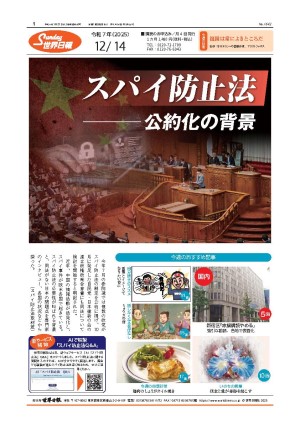関税は低・中所得層に打撃 Study finds tariffs to hit middle-, lower-income families hardest
今週の市場の動揺で最も大きな被害を受けたのは投資家だが、関税をめぐる懸念から株価の下落が進み、消費財の価格が上昇し、低・中所得層の家計に影響を及ぼす可能性がある。
トランプ政権はすでに、鉄鋼、アルミニウム、洗濯機などの製品に約420億ドル相当の関税を課している。タックス・ファウンデーションの試算報告によると、これによって中所得層にとって税引後所得が146ドル減少する。
関税は物価を上昇させ、賃金や株主への還元の圧迫につながり得る。商品の売買に必要な課税が増えるため、事業者はこれに対応するからだ。
あらゆる所得層がこれらの商品を購入する一方で、関税は所得の低い層の支出を増加させることになる。
報告を作成したエリカ・ヨーク氏は、「低所得世帯が消費する商品について見ると、関税による負担増が比較的大きく、収入の一部はそこに費やされる」と指摘した。
ヨーク氏の計算によると、低・中所得層世帯で、1/3%の所得減、所得が上位1%内の世帯にとっては0・1%にとどまる。
全米納税者組合・自由貿易計画のブライアン・ライリー所長は、この違いは表面上は小さく見えるが、低所得世帯にとっては非常に大きな打撃になると指摘した。
「影響が及ぶ要因は二つある。政策自体が低所得層に不利益をもたらすものであることと、そもそも所得が少ないの2点だ」
報告によると、この差は、自動車と中国製品に課すと警告している1290億ドル相当の追加関税を実行すれば、さらに拡大する。
そうなると低・中所得世帯への影響は税引後所得の1・4%に相当する。富裕層では1%未満にとどまる。
ヨーク氏は、「差は拡大する。関税を下げればその逆のことが起きる。低所得の納税者にとって、時間とともに税引後所得により大きな好影響が及ぶ」と指摘した。
トランプ大統領は、追加関税を実施するかどうかを明確にしていない。
トランプ氏は4日、ツイッターに「私はタリフ(関税)マンだ」と投稿し、これを受けて株価は下落した。米市場は5日、ジョージ・H・W・ブッシュ元大統領の追悼記念日で休場だった。
トランプ氏は、これまでに課した関税で「何十億ドルもの資金を手に入れた」と述べた。
一方、ツイッターで5日、中国の習近平国家主席と先週、アルゼンチンで交わした合意によって、停滞していた一部の市場は開放されると主張した。
経済学者、産業界の団体は、企業側の調整によって、関税は買い物をする消費者の痛みとなると以前から警告してきた。
バンブル・ビー・フーズのデービッド・メルボーン上級副社長は、輸入ツナへの新たな課税計画を注視していると述べ、ツナ缶は米消費者にとって低脂肪たんぱく質を最も取りやすい食品だと指摘した。
(12月5日付)
Wealthy investors may have been the biggest losers from this week’s market fluctuations, but the tariff fears that drove the sell-off are likely to leave a bigger hole in the wallets of lower- and middle-income households, who consume the goods that would become pricier, according to a new study Wednesday.
The Trump administration already has imposed tariffs worth close to $42 billion on imported steel, aluminum and goods such as washing machines - translating into a $146 after-tax income hit for middle-class families, the Tax Foundation calculated.
Tariffs can lead to price increases or a squeeze on wages and shareholders’ returns as businesses adjust to the additional levies they must pay to access and sell goods.
And while everyone across the economic spectrum buys those goods, the tariffs amount to a bigger chunk of expenditures for those on the lower end.
“If you think of the basket of goods that a lower-income household consumes, more of that will be burdened by tariffs and a larger share of their income goes toward that consumption,” said Erica York, the author of the report.
She calculated that lower- or middle-class families will see an income drop equivalent to one-third of 1 percent - a tenth of a percent more than the top 1 percent of earners.
Though the difference might appear small on its face, it translates into a significantly bigger hardship for lower-income families, said Bryan Riley, director of the Free Trade Initiative at the National Taxpayers Union.
“They’re kind of getting dinged in two ways - the first is that this is a policy that penalizes them more and the second is that they don’t have as much income in the first place,” he said.
That gap also could grow if the Trump administration follows through with an additional $129 billion worth of tariffs it has threatened to impose on auto imports and Chinese goods, the study found.
At that point, low- and middle-income households would see a hit equivalent to 1.4 percent of after-tax income. The wealthiest would see a drop of less than 1 percent.
“You see that spread widening,” Ms. York said. “Reducing tariffs would kind of be the opposite - it would be a bigger positive change in after-tax income over time for lower-income taxpayers.”
President Trump has left the world guessing about what comes next.
“I am a Tariff Man,” he proclaimed on Twitter Tuesday, sending stock market indexes tumbling. The U.S. markets were closed Wednesday for the National Day of Mourning for former President George H.W. Bush.
He said the tariffs he already has imposed are “taking in billions.”
Yet he also said on Twitter Wednesday that a handshake deal he struck with Chinese President Xi Jinping last weekend in Argentina could free up some stalled markets soon.
Economists and industry groups have long warned that tariffs translate into pain at the stores for consumers, as companies adjust.
David Melbourne, a senior vice president at Bumble Bee Foods, said his company is carefully eyeing new and planned levies on imported tuna loins, saying canned tuna is one of the most affordable sources of lean protein for U.S. consumers.
December 5, 2018





